Food & Dyes & Medicine
Many Native American food, dyes, and medicine plants are still used today.
Native American medicines can be spiritual or physical. Each animate and inanimate object in our world holds its own special powers, lessons, and healing qualities. Many modern medicines we use today have their basis in native American medicine teachings.
Article Index:
The Camas lily was used by Native Americans for medicinal purposes and its root bulbs were collected to make bread, or roasted like a potato.
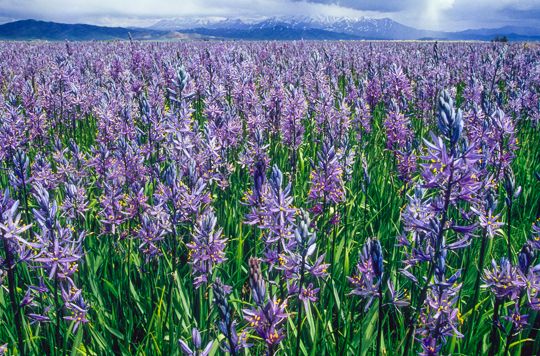
During their exploration of the area, Lewis and Clark — low on food at the time — were introduced to the plant by the Shoshone and Nez Perce tribes.
Given the importance of this plant species to the Nez Perce, Meriwether Lewis prepared a 1,500-word description of the plant and its uses.
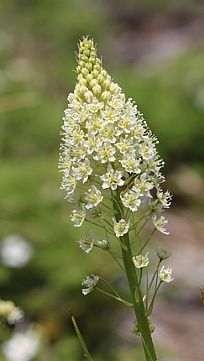
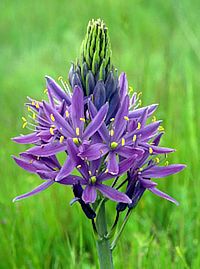
In another description of this species written in June of 1806, Lewis mistook … a valley of blooming camas (lilies) as a lake, stating, “From the colour of its bloom at a short distance it resembles lakes of fine clear water so complete is this deseption that on first site I could have swoarn it was water.”
There are six species of camas lilies in the genus Camassia that are edible.
Camassia angusta – prairie camas
Camassia cusickii – Cusick’s camas (occurs in eastern Oregon)
Camassia howellii – Howell’s camas
Camassia leichtlinii – large camas, great camas (occurs west of the Cascade Mountains from British Columbia to the Sierra Nevada).
Camassia leichtlinii ssp. leichtlinii : large camas
Camassia leichtlinii ssp. suksdorfii : Suksdorf’s large camas
Camassia quamash (Pursh) – quamash, Indian camas, small camas
Camassia scilloides – Atlantic camas, bear grass (occurs in the eastern United States in North America. The habitat extends along the Atlantic states from Maryland to Georgia and westward to Texas. It also includes the upper Midwest states of Michigan and Wisconsin.) While this species is edible, the stems of the plant were more commonly used as weaving material.
Bloom colors can vary from pale lilac or white to deep purple or blue-violet. NEVER, EVER eat the varieties with white flowers, because it is too easy to confuse them with the plant commonly known as Death Camas.
While Camassia species are edible and nutritious, the white-flowered death camas species (which are not in the genus Camassia but in a number of genera in the tribe Melanthieae) that grow in the same areas are toxic, and the bulbs are quite similar. It is easiest to tell the plants apart when they are in flower.
This food source is only harvested after it blooms because of its similar appearance to the poisonous plant called Death Camas. The foliage of the two plants is virtually indistinguishable, but Death Camas has a white bloom that is very different from the blue to purple blooms of the edible Camas Lily varieties.
Additionally, these two plants often grow intermingled in the same patch of ground.
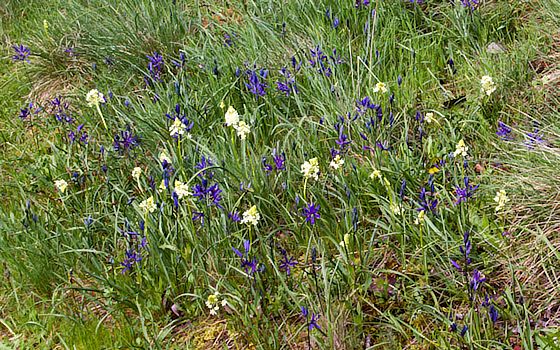
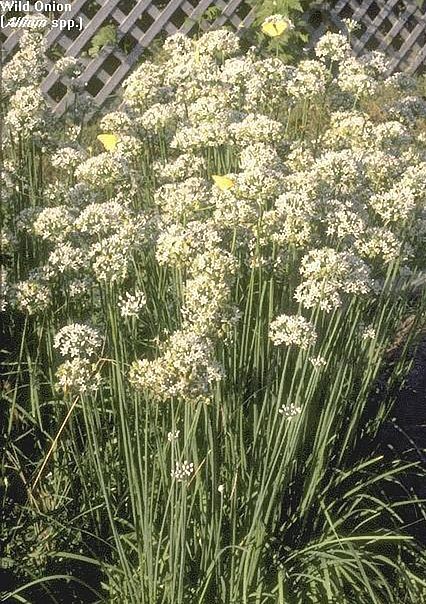 Death Camas also looks similar to Wild Onion, another staple harvested by native American tribes.
Death Camas also looks similar to Wild Onion, another staple harvested by native American tribes.
Because injesting a large serving of Death Camas can kill you, these plants should only be harvested if you are absolutely positive in your identification.
The camas lily grows in moist meadows in western Canada and the western United States, from southern British Columbia to northern California, and east to Utah, Wyoming and Montana.
It will also grow in lightly shaded forest areas and on rocky outcrops as well as in open meadows or prairies.
Additionally it is found growing alongside streams and rivers.
Common names for the various edible varieties include camas, quamash, Indian hyacinth, camash, and wild hyacinth.
They are perennial plants with basal linear leaves measuring 8 to 32 inches (20 to 81 cm) in length, which emerge early in the spring. They grow to a height of 12 to 50 inches (30 to 127 cm), with a multi-flowered stem rising above the main plant in late spring / early summer.
Camas lilies often grow in vast drifts, as shown in the first picture in this article, and naturalizes extensively in moist locations. They also grow well as cultivated ornamental plants. The plants may be divided in autumn after the leaves have withered. Bulbs should be planted in the autumn. The plant spreads by seed rather than by runners.
Camas Lily usually blooms in May in the central regions of its habitat, particularly during the last half of the month. It may bloom a bit earlier in more southern locations or a bit later in the northern boundaries of its range.
However, it was often harvested in the autumn by experienced foragers. Once the flowers have withered, the bulbs were dug and pit-roasted or boiled. A pit-cooked camas bulb looks and tastes something like baked sweet potato, but sweeter, and with more crystalline fibers due to the presence of inulin in the bulbs. When dried, the bulbs can also be pounded into flour.
Native American tribes who ate camas included the Nez Perce, Cree, Coast Salish, Lummi, and Blackfoot tribes, among many others. The Kutenai called the camas “xapi” (Ktunaxa).
Medicinal Uses for Camas Lily
As a birthing aid:
-
A decoction (boiling down) of the roots has been used to induce labor.
-
An infusion of the leaves has been used to treat vaginal bleeding after birth and to help expel the placenta.
As a cough medicine:
-
The Nez Perce boiled down the bulbs, drained the juice and mixed it with honey to treat coughing.
As a pain reliever:
-
Small portions of the poisonous “Death camas” (Zigadenus venomous) were used topically for its numbing properties to treat toothaches, sprains or bruises.
Cattails can be found virtually anywhere in the wilderness where there is a water source and are a supermarket full of food and uses that can help ensure your survival.
They can be found growing along streams, rivers, lakes and ponds. The cattail plant (also known as the tule plant) is not only edible and medicinal, it has other uses such as cordage, bedding, insulation, fire tender, shelters, baskets and even hats.
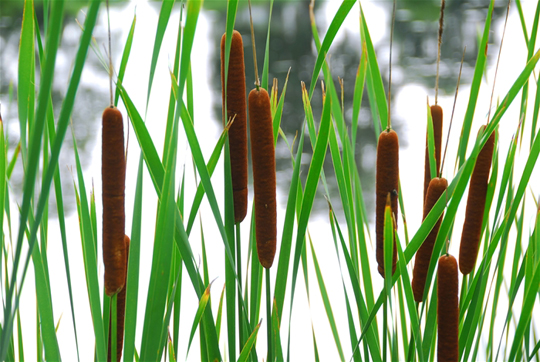
Cattails As Survival Food
The stems a few inches above the soil line in early summer are young and tender and can be peeled and eaten raw or boiled. The roots are great as well, simply pull the lower stalks until the roots break free, peel and eat raw or boil.
The cattail will also develop flower heads that can be eaten by roasting as you would an ear of corn.
By mid to late summer, pollen will collect on the heads and it is easily shaken loose into any container to be used like flour to make breads, pancakes and can be used for thickeners in gravies and sauces.
The roots in late fall and early winter can be mashed and soaked in water to release the starch. The starch will settle on the bottom and will resemble wet flour. Drain the water off and make bread, by adding a little pollen or add to clean water to make soup.
Cattails are an ideal survival food because they are easily recognizable and grow practically anywhere there is fresh water.
As Shelter Material
The green leaves can be cut and woven together into shingle like squares for covering a shelter roof. The material will provide protection from the rain, snow and wind even after it has dried.
Weave a sleeping mat by making two long mats. Connect the mats on one side so it can be folded like a sleeping bag. Before folding over fill one side with pine boughs or other material suitable for sleeping on and then fold the empty half over and tie off so the “stuffing” is secured inside. You can fold the mat up and carry it with you if you have to break camp for another location.
Medicinal Uses
Cattails are truly a survival plant in the truest sense of the word. They not only provide, food, material for shelters and cordage, cattails have several medicinal uses as well. To treat burns, scrapes, insect bites and bruises, split open a cattail root and “bruise” the exposed portion so it can be used as a poultice that can be secured over the injured area.
The ash of burnt cattails is said to have antiseptic properties and many people have used the ashes to treat wounds and abrasions to prevent infection from developing.
If you look closely at the lower stems you will notice an amber or honey like substance that seeps from the stem. Use this secretion to treat small wounds and even toothaches, because it also has antiseptic properties.
Baskets or Packs
You can get creative and weave baskets or small packs for carrying food or other items. Cross a number of leaves together and once you have the base the size you want, fold the remaining pieces up and then weave around the sides to secure the shape. If you need a taller basket, overlap another cattail leaf about four inches before you reach the top of the first row of leaves, so it is caught in several rows of the circular weave around the sides of the basket.
When your container is tall enough, fold the remaining tips over the rim and weave them back through a couple rows of the existing weave to secure them and tear off the excess. You can easily weave handles or straps into the basket/pack to make it easier to carry. The basket will become stronger as the cattail leaves dry and harden.
As Cordage
Peel strips from the leaves and allow them to dry somewhat. Once dried, braid at least three strips together to create a line for fishing or use in shelter building to tie a pole or brush framework together and to attach your woven mats to the frame of your shelter. Start covering the shelter from the bottom and work up, overlapping each mat a couple inches. Then if it rains, the water will run off the outside of the mats.
Fire Starting and Insulation
The head of the cattail after it has turned dark brown will have “fluff” inside, which is excellent tinder. Even after a rain the tinder may still be dry inside the head and if not remove and place in a pocket to dry out by allowing the clothing to absorb the moisture as long as the weather is warm.
The fluff can also be used as insulation for hats and shoes and if you have enough of it, you could make pillows and even stuff a poncho or tarp to make a mattress. It also works great in a baby’s diaper to absorb wetness.
The head can also be covered in pine resin to make a torch. Cut off enough of the stalk for a long handle with the head attached. Roll the head in pine resin and light when needed. Not only will this provide you with light at night, it is a good way to transport fire from one location to another when you have to move camp.
Nitro-Pak has the most complete & affordable selection of emergency preparedness & food storage products in the world. Visit
Lately we have heard the phrase “Indian summer” used frequently to describe our stretch of good weather. Most of us are taking advantage of the warm weather rather than contemplating the etymology of the term “Indian summer.”
However, a study of the phrase is an eye-opening look into our nation’s history. After years of asking elders and prominent Indian historians, I stumbled across an article written by a leading American Indian author from an Eastern tribe who explained the origins of “Indian summer.”

